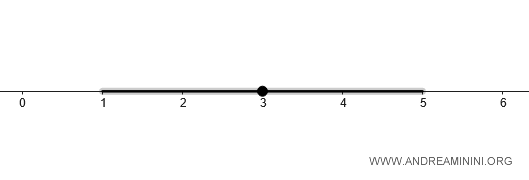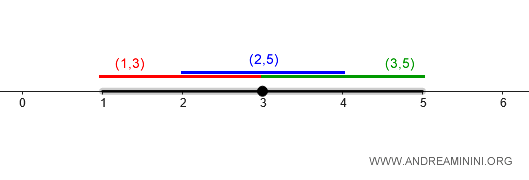Bounded Metric Theorem
In a metric space \( (X, d) \), it is possible to define a new bounded metric \( d'(x, y) = \min(d(x, y), 1) \), which generates the same topology as \( d \). This means the open sets defined by \( d \) and \( d' \) are identical.
In simpler terms, the new metric \( d'(x, y) \) is derived from the original metric \( d(x, y) \) in the metric space \( (X, d) \), where:
$$ d'(x, y) = \min(d(x, y), 1) $$
The metric \( d'(x, y) \) takes the value of \( d(x, y) \) unless it exceeds 1, making \( d' \) bounded since it can never be greater than 1.
The topology induced by \( d' \) is identical to that induced by \( d \).
This implies that the open sets defined by \( d' \) are exactly the same as those defined by \( d \). As a result, the "shape" of the open sets in the space does not change, even though \( d' \) is a bounded metric.
Note: Generally, \(1\) can be replaced with any value \(\varepsilon > 0\). $$ d'(x, y) = \min(d(x, y), \varepsilon) $$ In this case, distances would be capped at \(\varepsilon\), while the induced metrics would still produce the same topology. For simplicity, I’ll illustrate this with the limit set to \( \varepsilon = 1 \).
A Practical Example
Consider the space \( \mathbb{R} \) with the standard metric:
$$ d(x, y) = |x - y| $$
Now, let’s define a new bounded metric:
$$ d'(x, y) = \min(|x - y|, 1) $$
In this new metric, distances are capped at 1.
For instance, if \( x = 2 \) and \( y = 5 \), the distance using the original metric is \( d(2, 5) = |2 - 5| = 3 \), but with the new bounded metric, it becomes \( d'(2, 5) = \min(3, 1) = 1 \). On the other hand, if \( x = 2 \) and \( y = 2.5 \), then \( d'(2, 2.5) = \min(|2 - 2.5|, 1) = 0.5 \), which matches the original metric since \( |2 - 2.5| < 1 \). In this case, the two metrics yield the same distance: \( d = d' = 0.5 \). $$ \begin{array}{|c|c|c|c|} \hline x & y & d & d' \\ \hline 2 & 5 & 3 & 1 \\ \hline 2 & 2.5 & 0.5 & 0.5 \\ \hline 6 & 8 & 2 & 1 \\ \hline \end{array} $$
The new metric \( d' \) "truncates" distances greater than 1, but the notions of proximity and open sets remain unchanged. Hence, the topology induced by \( d \) and \( d' \) is equivalent.
Why Does the Topology Remain the Same?
Open sets in a topology are defined as unions of open balls.
Although the open balls in \( d' \) may be smaller than those in \( d \), multiple \( d' \)-balls can be combined to cover any open set defined by \( d \).
For example, consider the open ball \( B_d(3, 2) \) centered at \( 3 \) with a radius of \( 2 \).
This open ball consists of all points \( y \in \mathbb{R} \) such that the distance from \( x \) to \( y \) is less than \( r = 2 \), i.e.,
$$ B_d(x, r) = \{y \in \mathbb{R} \mid d(x, y) < r\} $$
In this case, \( x = 3 \) and \( r = 2 \).
$$ B_d(3, 2) = \{y \in \mathbb{R} \mid d(3, y) < 2\} $$
Using the standard metric (\( d(x, y) = |x - y| \)), the open ball \( B_d(3, 2) \) contains all real numbers \( y \) satisfying:
$$ |3 - y| < 2 $$
Rewriting this condition:
$$ -2 < 3 - y < 2 $$
$$ -5 < -y < -1 $$
$$ 1 < y < 5 $$
Thus, \( B_d(3, 2) \) corresponds to the open interval \( (1, 5) \), which includes all points within 2 units of 3 on the real line.
$$ B_d(3, 2) = (1, 5) $$
Here is a visual representation on the number line:

To cover the interval \( (1, 5) \) using \( d' \), we can use the union of smaller balls, such as:
$$ B_{d'}(2, 1) \cup B_{d'}(3, 1) $$
The first ball covers \( (1, 3) \), and the second covers \( (3, 5) \). Together, they fully cover the interval \( (1, 5) \).

This demonstrates that \( d' \) and \( d \) produce the same open sets, ensuring the topology remains unchanged.
The Proof
To prove that \( d' \) induces the same topology as \( d \), we first verify that \( d' \) is a valid metric, satisfying the following properties:
- \( d'(x, y) \geq 0 \),
- \( d'(x, y) = 0 \) if and only if \( x = y \),
- \( d'(x, y) = d'(y, x) \),
- \( d' \) satisfies the triangle inequality.
The triangle inequality holds because:
- When \( d(x, y) \) or \( d(y, z) \) are greater than or equal to 1, \( d'(x, y) + d'(y, z) \geq d'(x, z) \) is straightforward since \( d'(x, y) + d'(y, z) = 1 + 1 = 2 \), and \( d'(x, z) \leq 1 \).
- When \( d(x, y) < 1 \) and \( d(y, z) < 1 \), we have \( d'(x, y) = d(x, y) \), \( d'(y, z) = d(y, z) \), and \( d'(x, z) = d(x, z) \). Since \( d \) is a metric by assumption, the triangle inequality holds for \( d' \) as well.
Next, we demonstrate that the topologies \( T \) (induced by \( d \)) and \( T' \) (induced by \( d' \)) are identical by showing:
- \( T \) is finer than \( T' \),
- \( T' \) is finer than \( T \).
A] \( T \) is finer than \( T' \)
The original topology \( T \) is finer because:
- When the radius \( r \) of the ball is less than or equal to 1, the open balls are identical: $$ B_d(x, r) = B_{d'}(x, r) $$
- For \( r > 1 \), the open ball in \( T \) contains the corresponding ball in \( T' \): $$ B_d(x, r) \supseteq B_{d'}(x, r) $$
B] \( T' \) is finer than \( T \)
The reverse also holds because:
- When \( r \leq 1 \), the open balls are the same: $$ B_d(x, r) = B_{d'}(x, r) $$
- For \( r > 1 \), unions of smaller \( d' \)-balls can cover any open set in \( T \).
Conclusion
Since \( T \) is finer than \( T' \) and \( T' \) is finer than \( T \), we conclude \( T = T' \), proving the two topologies are identical.
